-
A dental implant (also regarded as an endosseous implant or fixture) is a surgical issue that interfaces with the bone of the jaw or cranium to assist a dental prosthesis such as a crown, bridge, denture, facial prosthesis or to act as an orthodontic anchor. The basis for contemporary dental implants is a biologic manner called osseointegration, in which substances such as titanium form an intimate bond to bone. The implant fixture is first positioned so that it is probable to osseointegrate, then a dental prosthetic is added. A variable amount of recuperation time is required for osseointegration earlier than either the dental prosthetic (a tooth, bridge or denture) is connected to the implant or an abutment is placed which will hold a dental prosthetic.
-
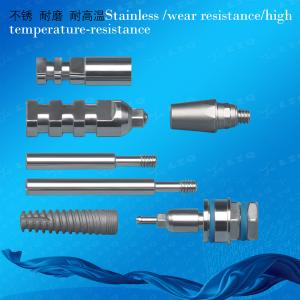 Abutment Hex Remover
Abutment Hex Remover
MORE>
Abutment Hex Remover
Abutment Hex Remover
MORE>
-
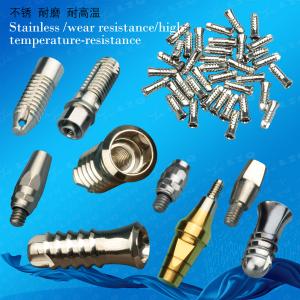 Abutment Horizontal Impression Module PEEK Protecting Coping
Abutment Horizontal Impression Module PEEK Protecting Coping
MORE>
Abutment Horizontal Impression Module PEEK Protecting Coping
Abutment Horizontal Impression Module PEEK Protecting Coping
MORE>
-
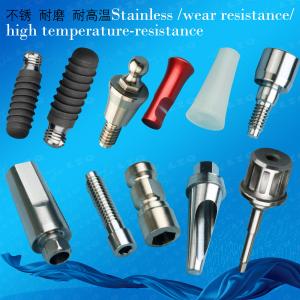 Abutment Removal Forceps
Abutment Removal Forceps
MORE>
Abutment Removal Forceps
Abutment Removal Forceps
MORE>
-
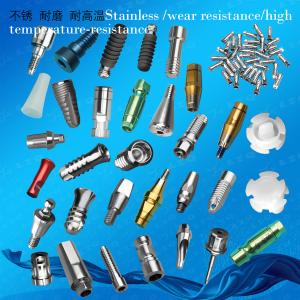 Dental Abutment'S Tranfers Closed Tray Transfers Clip Impression Transfer
Dental Abutment'S Tranfers Closed Tray Transfers Clip Impression Transfer
MORE>
Dental Abutment'S Tranfers Closed Tray Transfers Clip Impression Transfer
Dental Abutment'S Tranfers Closed Tray Transfers Clip Impression Transfer
MORE>
-
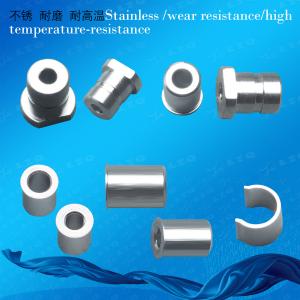 Dental Flat Connection Transfer Impression Coping Angulated Titanium Abutment
Dental Flat Connection Transfer Impression Coping Angulated Titanium Abutment
MORE>
Dental Flat Connection Transfer Impression Coping Angulated Titanium Abutment
Dental Flat Connection Transfer Impression Coping Angulated Titanium Abutment
MORE>
-
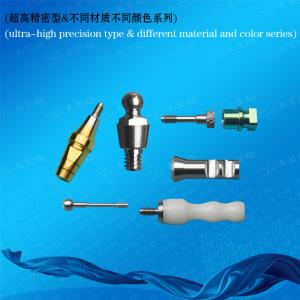 Dental Hexagon Impression Transfer Implant’S Position Transfer Transfer Impression Coping
Dental Hexagon Impression Transfer Implant’S Position Transfer Transfer Impression Coping
MORE>
Dental Hexagon Impression Transfer Implant’S Position Transfer Transfer Impression Coping
Dental Hexagon Impression Transfer Implant’S Position Transfer Transfer Impression Coping
MORE>
-
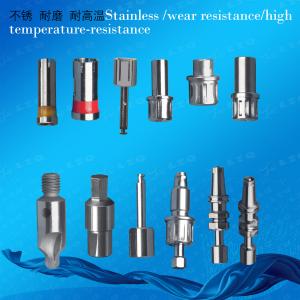 Detal Implant Drill Stopper
Detal Implant Drill Stopper
MORE>
Detal Implant Drill Stopper
Detal Implant Drill Stopper
MORE>
-
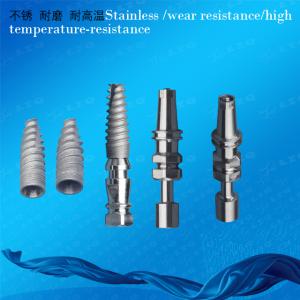 Fixture Remover Cover Abutment Screw Remover
Fixture Remover Cover Abutment Screw Remover
MORE>
Fixture Remover Cover Abutment Screw Remover
Fixture Remover Cover Abutment Screw Remover
MORE>
-
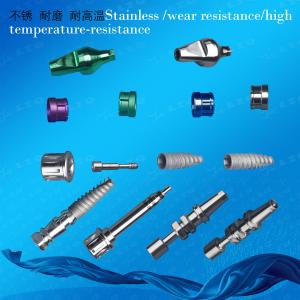 Implant Ratchet Adaptor Placement Pin
Implant Ratchet Adaptor Placement Pin
MORE>
Implant Ratchet Adaptor Placement Pin
Implant Ratchet Adaptor Placement Pin
MORE>
-
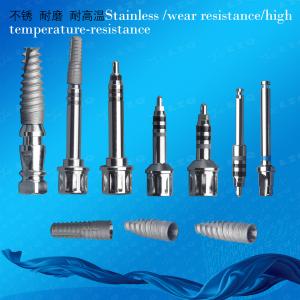 Implant Remover Mount
Implant Remover Mount
MORE>
Implant Remover Mount
Implant Remover Mount
MORE>
-
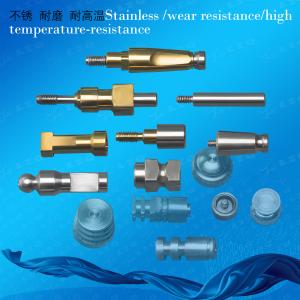 Implant Screw Angulated Abutment
Implant Screw Angulated Abutment
MORE>
Implant Screw Angulated Abutment
Implant Screw Angulated Abutment
MORE>
-
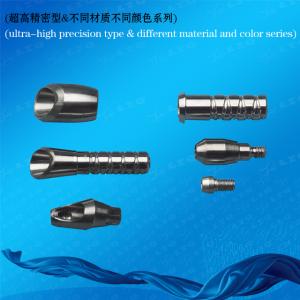 Locator Attachments
Locator Attachments
MORE>
Locator Attachments
Locator Attachments
MORE>
-
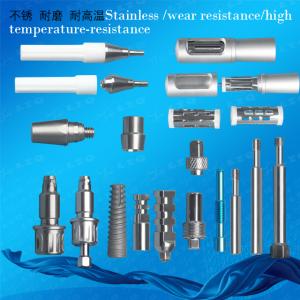 Multi-Unit Abutment Holde Foot Care Blade Blade To Remove Hard Skin From Feet Mount Implant
Multi-Unit Abutment Holde Foot Care Blade Blade To Remove Hard Skin From Feet Mount Implant
MORE>
Multi-Unit Abutment Holde Foot Care Blade Blade To Remove Hard Skin From Feet Mount Implant
Multi-Unit Abutment Holde Foot Care Blade Blade To Remove Hard Skin From Feet Mount Implant
MORE>
-
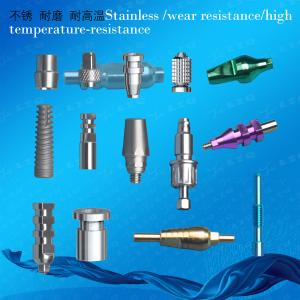 Open Tray Impression Transfer Abutment Implant Attachment
Open Tray Impression Transfer Abutment Implant Attachment
MORE>
Open Tray Impression Transfer Abutment Implant Attachment
Open Tray Impression Transfer Abutment Implant Attachment
MORE>
-
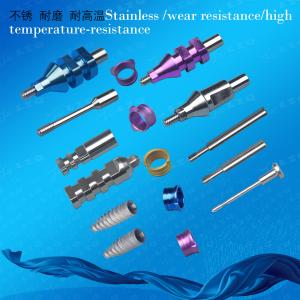 Open Tray Impression Transfer Open Tray Tranfer
Open Tray Impression Transfer Open Tray Tranfer
MORE>
Open Tray Impression Transfer Open Tray Tranfer
Open Tray Impression Transfer Open Tray Tranfer
MORE>
-
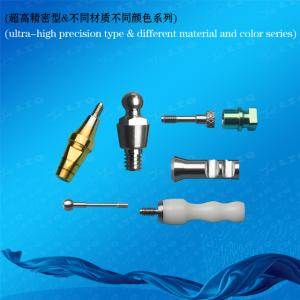 Retentive Anchor Abutment
Retentive Anchor Abutment
MORE>
Retentive Anchor Abutment
Retentive Anchor Abutment
MORE>
-
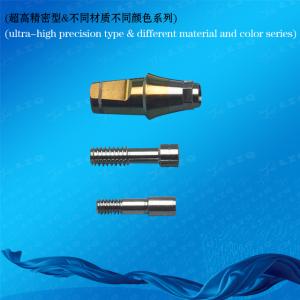 Straight Abutment With Shoulder Dual Milling Abutment
Straight Abutment With Shoulder Dual Milling Abutment
MORE>
Straight Abutment With Shoulder Dual Milling Abutment
Straight Abutment With Shoulder Dual Milling Abutment
MORE>
-
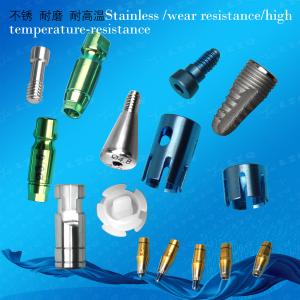 Ti Alloy Implant Drills Ball Socket Fixture
Ti Alloy Implant Drills Ball Socket Fixture
MORE>
Ti Alloy Implant Drills Ball Socket Fixture
Ti Alloy Implant Drills Ball Socket Fixture
MORE>
-
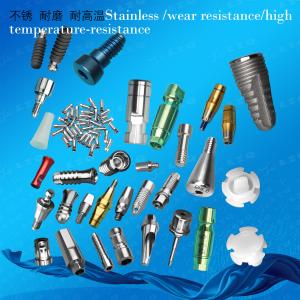 Ti Alloy Implant
Ti Alloy Implant
MORE>
Ti Alloy Implant
Ti Alloy Implant
MORE>
-
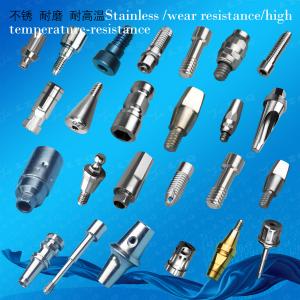 Ti Alloy Screw Proper Dental Implants
Ti Alloy Screw Proper Dental Implants
MORE>
Ti Alloy Screw Proper Dental Implants
Ti Alloy Screw Proper Dental Implants
MORE>
-
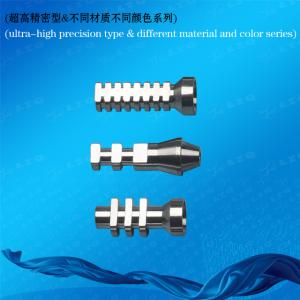 Transfer Impression For Narrow Platform
Transfer Impression For Narrow Platform
MORE>
Transfer Impression For Narrow Platform
Transfer Impression For Narrow Platform
MORE>
-
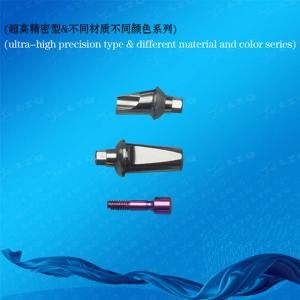 Abutment,Vertical Screw,Center Screw
Abutment,Vertical Screw,Center Screw
MORE>
Abutment,Vertical Screw,Center Screw
Abutment,Vertical Screw,Center Screw
MORE>
-
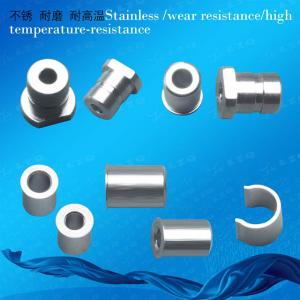 Abutment Drivers,Ball Abutment Driver
Abutment Drivers,Ball Abutment Driver
MORE>
Abutment Drivers,Ball Abutment Driver
Abutment Drivers,Ball Abutment Driver
MORE>
-
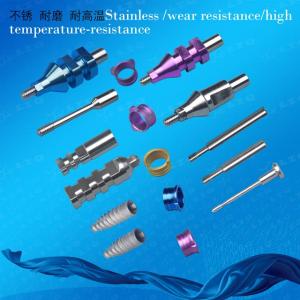 Analog For Bar,Parallel Post,Transversal Screw,Closure Screw
Analog For Bar,Parallel Post,Transversal Screw,Closure Screw
MORE>
Analog For Bar,Parallel Post,Transversal Screw,Closure Screw
Analog For Bar,Parallel Post,Transversal Screw,Closure Screw
MORE>
-
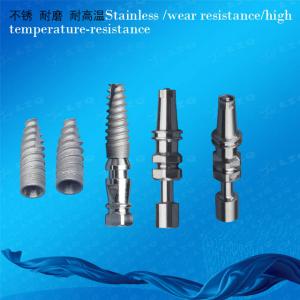 Angulated Impacted Abutment,Try-In Abutments,Cover Screw,Ball Abutment, Couple Abutment
Angulated Impacted Abutment,Try-In Abutments,Cover Screw,Ball Abutment, Couple Abutment
MORE>
Angulated Impacted Abutment,Try-In Abutments,Cover Screw,Ball Abutment, Couple Abutment
Angulated Impacted Abutment,Try-In Abutments,Cover Screw,Ball Abutment, Couple Abutment
MORE>
-
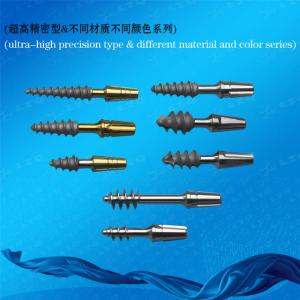 Burn-Out Sleeves,Nitrided Abutments,Adaptable Analogs,Customizable Abutment
Burn-Out Sleeves,Nitrided Abutments,Adaptable Analogs,Customizable Abutment
MORE>
Burn-Out Sleeves,Nitrided Abutments,Adaptable Analogs,Customizable Abutment
Burn-Out Sleeves,Nitrided Abutments,Adaptable Analogs,Customizable Abutment
MORE>
-
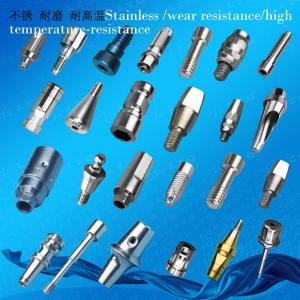 Clip Impression Transfer,Abutment’S Tranfers,Implant’S Position Transfer,Transfer Impression Coping
Clip Impression Transfer,Abutment’S Tranfers,Implant’S Position Transfer,Transfer Impression Coping
MORE>
Clip Impression Transfer,Abutment’S Tranfers,Implant’S Position Transfer,Transfer Impression Coping
Clip Impression Transfer,Abutment’S Tranfers,Implant’S Position Transfer,Transfer Impression Coping
MORE>
-
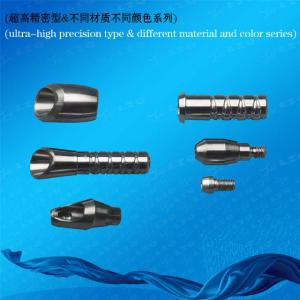 Conica Abutment Analog,Nitrided Titanium Abutment,Titan Abutments For A Temporary Tooth,Golden Tappe
Conica Abutment Analog,Nitrided Titanium Abutment,Titan Abutments For A Temporary Tooth,Golden Tappe
MORE>
Conica Abutment Analog,Nitrided Titanium Abutment,Titan Abutments For A Temporary Tooth,Golden Tappe
Conica Abutment Analog,Nitrided Titanium Abutment,Titan Abutments For A Temporary Tooth,Golden Tappe
MORE>
-
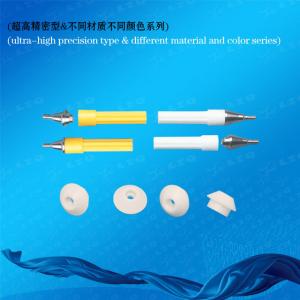 Direct Temporary Abutment,Temporary Non-Rotational Abutment,Temporary Rotational Abutment,Protection
Direct Temporary Abutment,Temporary Non-Rotational Abutment,Temporary Rotational Abutment,Protection
MORE>
Direct Temporary Abutment,Temporary Non-Rotational Abutment,Temporary Rotational Abutment,Protection
Direct Temporary Abutment,Temporary Non-Rotational Abutment,Temporary Rotational Abutment,Protection
MORE>
-
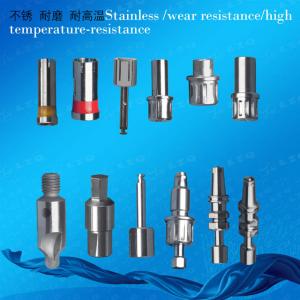 Esthetibase Abutments For Zirconia Prosthesis,Conocta Abutment,Direct Final Abutment,Conica Abutment
Esthetibase Abutments For Zirconia Prosthesis,Conocta Abutment,Direct Final Abutment,Conica Abutment
MORE>
Esthetibase Abutments For Zirconia Prosthesis,Conocta Abutment,Direct Final Abutment,Conica Abutment
Esthetibase Abutments For Zirconia Prosthesis,Conocta Abutment,Direct Final Abutment,Conica Abutment
MORE>
-
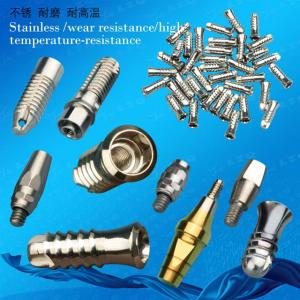 Fabrication Screw,Impression Coping For Bar,Protective Cap
Fabrication Screw,Impression Coping For Bar,Protective Cap
MORE>
Fabrication Screw,Impression Coping For Bar,Protective Cap
Fabrication Screw,Impression Coping For Bar,Protective Cap
MORE>
-
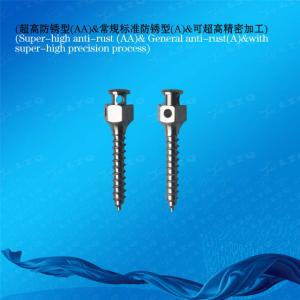 Finisher For Taper Retention Screw
Finisher For Taper Retention Screw
MORE>
Finisher For Taper Retention Screw
Finisher For Taper Retention Screw
MORE>
-
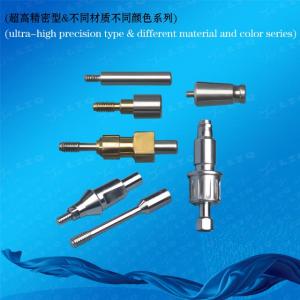 Flat Connection Transfer Impression Coping,Slim Closed Tray Transfer,Transfer Pick-Up,Implant Transf
Flat Connection Transfer Impression Coping,Slim Closed Tray Transfer,Transfer Pick-Up,Implant Transf
MORE>
Flat Connection Transfer Impression Coping,Slim Closed Tray Transfer,Transfer Pick-Up,Implant Transf
Flat Connection Transfer Impression Coping,Slim Closed Tray Transfer,Transfer Pick-Up,Implant Transf
MORE>
-
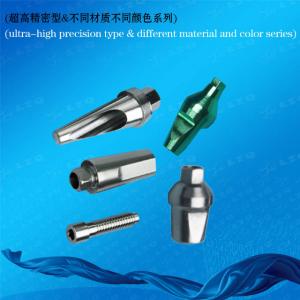 Gold Abutment For Crown,Retain Milling Abutment,Retain Bar Abutment
Gold Abutment For Crown,Retain Milling Abutment,Retain Bar Abutment
MORE>
Gold Abutment For Crown,Retain Milling Abutment,Retain Bar Abutment
Gold Abutment For Crown,Retain Milling Abutment,Retain Bar Abutment
MORE>
-
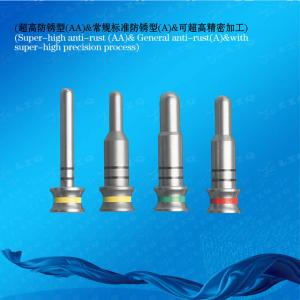 Guide Pin,Guide Pin Implant Level
Guide Pin,Guide Pin Implant Level
MORE>
Guide Pin,Guide Pin Implant Level
Guide Pin,Guide Pin Implant Level
MORE>
-
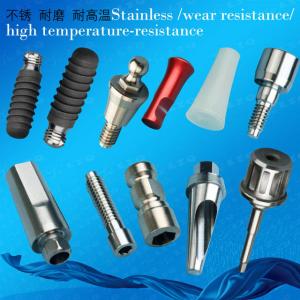 Horizontal Screw,Vertical Screw,Healing Abutments,Pop-In Impression Coping
Horizontal Screw,Vertical Screw,Healing Abutments,Pop-In Impression Coping
MORE>
Horizontal Screw,Vertical Screw,Healing Abutments,Pop-In Impression Coping
Horizontal Screw,Vertical Screw,Healing Abutments,Pop-In Impression Coping
MORE>
-
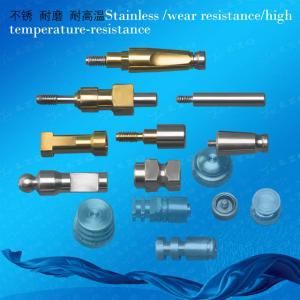 Implant Analog,Straight Trans-Screwed Abutment,Angulated Trans-Screwed Abutment,Teknikalab Customize
Implant Analog,Straight Trans-Screwed Abutment,Angulated Trans-Screwed Abutment,Teknikalab Customize
MORE>
Implant Analog,Straight Trans-Screwed Abutment,Angulated Trans-Screwed Abutment,Teknikalab Customize
Implant Analog,Straight Trans-Screwed Abutment,Angulated Trans-Screwed Abutment,Teknikalab Customize
MORE>
-
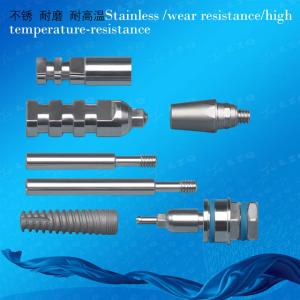 Mini Prosthesis Screw,Aesthetic Abutments,Aesthetic Impression Abutments,Gingiva Former, Impression
Mini Prosthesis Screw,Aesthetic Abutments,Aesthetic Impression Abutments,Gingiva Former, Impression
MORE>
Mini Prosthesis Screw,Aesthetic Abutments,Aesthetic Impression Abutments,Gingiva Former, Impression
Mini Prosthesis Screw,Aesthetic Abutments,Aesthetic Impression Abutments,Gingiva Former, Impression
MORE>
-
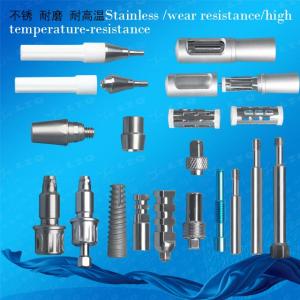 Non-Rotational Esthetibase,Rotational Esthetibase,Conhex Abutment Analog
Non-Rotational Esthetibase,Rotational Esthetibase,Conhex Abutment Analog
MORE>
Non-Rotational Esthetibase,Rotational Esthetibase,Conhex Abutment Analog
Non-Rotational Esthetibase,Rotational Esthetibase,Conhex Abutment Analog
MORE>
-
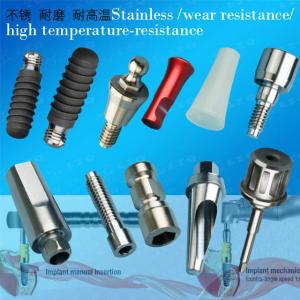 One-Body Transfer Impression Coping,Open Tray Transfer,Open Transfer,Closed Transfer
One-Body Transfer Impression Coping,Open Tray Transfer,Open Transfer,Closed Transfer
MORE>
One-Body Transfer Impression Coping,Open Tray Transfer,Open Transfer,Closed Transfer
One-Body Transfer Impression Coping,Open Tray Transfer,Open Transfer,Closed Transfer
MORE>
-
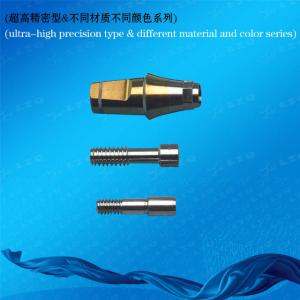 Open Tray Transfer,Clip Transfer
Open Tray Transfer,Clip Transfer
MORE>
Open Tray Transfer,Clip Transfer
Open Tray Transfer,Clip Transfer
MORE>
-
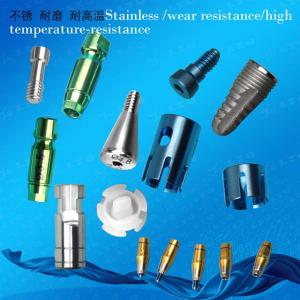 Paralleling Post,Sub Impression Post,Provisional Abutment,Temporary Peek Abutment
Paralleling Post,Sub Impression Post,Provisional Abutment,Temporary Peek Abutment
MORE>
Paralleling Post,Sub Impression Post,Provisional Abutment,Temporary Peek Abutment
Paralleling Post,Sub Impression Post,Provisional Abutment,Temporary Peek Abutment
MORE>
-
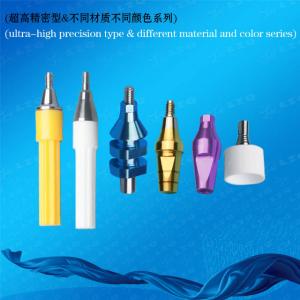 Pick-Up Impression Coping,Straight Abutments,Gold Palladium Abutment,Esthetibase Abutments For Zirco
Pick-Up Impression Coping,Straight Abutments,Gold Palladium Abutment,Esthetibase Abutments For Zirco
MORE>
Pick-Up Impression Coping,Straight Abutments,Gold Palladium Abutment,Esthetibase Abutments For Zirco
Pick-Up Impression Coping,Straight Abutments,Gold Palladium Abutment,Esthetibase Abutments For Zirco
MORE>
-
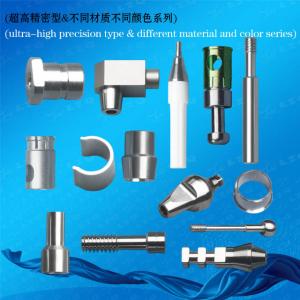 Pop Up Transfer Abutment Titanium Temporary Abutment,Pick-Up Impression Transfer,Straight Connection
Pop Up Transfer Abutment Titanium Temporary Abutment,Pick-Up Impression Transfer,Straight Connection
MORE>
Pop Up Transfer Abutment Titanium Temporary Abutment,Pick-Up Impression Transfer,Straight Connection
Pop Up Transfer Abutment Titanium Temporary Abutment,Pick-Up Impression Transfer,Straight Connection
MORE>
-
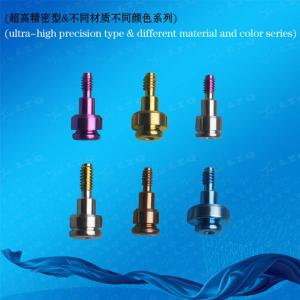 Positioner,Technical Screw,Mini Technician Screw,Conical Mini Technician Screw
Positioner,Technical Screw,Mini Technician Screw,Conical Mini Technician Screw
MORE>
Positioner,Technical Screw,Mini Technician Screw,Conical Mini Technician Screw
Positioner,Technical Screw,Mini Technician Screw,Conical Mini Technician Screw
MORE>
-
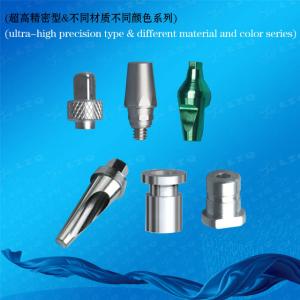 Screw For Open Transfer,Analog Abutment For Straight Connection Abutment,Anatomic Connection Abutmen
Screw For Open Transfer,Analog Abutment For Straight Connection Abutment,Anatomic Connection Abutmen
MORE>
Screw For Open Transfer,Analog Abutment For Straight Connection Abutment,Anatomic Connection Abutmen
Screw For Open Transfer,Analog Abutment For Straight Connection Abutment,Anatomic Connection Abutmen
MORE>
-
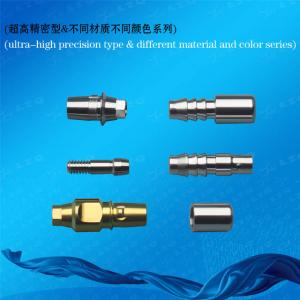 Screw For Straight Connection Abutment,Healing Abutment,Angulated Titanium Abutment,Transfer Screws
Screw For Straight Connection Abutment,Healing Abutment,Angulated Titanium Abutment,Transfer Screws
MORE>
Screw For Straight Connection Abutment,Healing Abutment,Angulated Titanium Abutment,Transfer Screws
Screw For Straight Connection Abutment,Healing Abutment,Angulated Titanium Abutment,Transfer Screws
MORE>
-
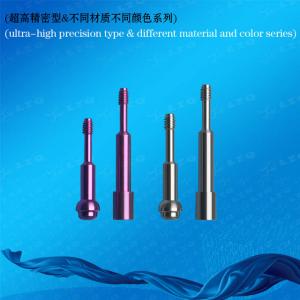 Screw Retained Abutment,Cement Retained Abutment,Attachment Retained Abutment,Pick-Up Impression Cop
Screw Retained Abutment,Cement Retained Abutment,Attachment Retained Abutment,Pick-Up Impression Cop
MORE>
Screw Retained Abutment,Cement Retained Abutment,Attachment Retained Abutment,Pick-Up Impression Cop
Screw Retained Abutment,Cement Retained Abutment,Attachment Retained Abutment,Pick-Up Impression Cop
MORE>
-
A dental implant (also regarded as an endosseous implant or fixture) is a surgical issue that interfaces with the bone of the jaw or cranium to assist a dental prosthesis such as a crown, bridge, denture, facial prosthesis or to act as an orthodontic anchor. The basis for contemporary dental implants is a biologic manner called osseointegration, in which substances such as titanium form an intimate bond to bone. The implant fixture is first positioned so that it is probable to osseointegrate, then a dental prosthetic is added. A variable amount of recuperation time is required for osseointegration earlier than either the dental prosthetic (a tooth, bridge or denture) is connected to the implant or an abutment is placed which will hold a dental prosthetic.
Success or failure of implants depends on the fitness of the man or woman receiving the treatment, tablets which affect the chances of osseointegration, and the health of the tissues in the mouth. The amount of stress that will be put on the implant and fixture all through everyday feature is also evaluated. Planning the position and variety of implants is key to the long-term fitness of the prosthetic considering biomechanical forces created during chewing can be significant. The function of implants is decided through the position and attitude of adjoining teeth, via lab simulations or via the use of computed tomography with CAD/CAM simulations and surgical publications called stents. The conditions for long-term success of osseointegrated dental implants are healthy bone and gingival. Since both can atrophy after teeth extraction, pre-prosthetic approaches such as sinus lifts or gingival grafts are occasionally required to recreate best bone and gingival.
The closing prosthetic can be either fixed, where an individual can't remove the denture or teeth from their mouth, or removable, where they can eliminate the prosthetic. In every case an abutment is connected to the implant fixture. Where the prosthetic is fixed, the crown, bridge or denture is constant to the abutment either with lag screws or with dental cement. Where the prosthetic is removable, a corresponding adapter is placed in the prosthetic so that the two portions can be secured together.
The dangers and issues associated to implant therapy divide into those that take place all through surgical treatment (such as excessive bleeding or nerve injury), these that manifest in the first six months (such as contamination and failure to osseointegrate) and these that manifest long-term (such as peri-implantitisand mechanical failures). In the presence of healthful tissues, a well-integrated implant with terrific biomechanical hundreds can have 5-year plus survival rates from 93 to ninety eight percent and 10 to 15 yr life spans for the prosthetic teeth. Long-term research exhibit a 16- to 20-year success (implants surviving without complications or revisions) between 52% and 76%, with complications taking place up to 48% of the time.

 +86-021-50327060
+86-021-50327060
 zq@lzqtech.com
zq@lzqtech.com
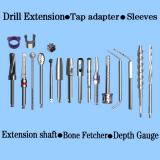 Medical Instrument
We can achieve perfect edge quality and dimensional tolerance up to±0.0005mm (±0.5μm) in the process of micro, ultra-long, ultra-thin, super-abrasive, impact-resistant, high-precision and combined ... VIEW MORE
Medical Instrument
We can achieve perfect edge quality and dimensional tolerance up to±0.0005mm (±0.5μm) in the process of micro, ultra-long, ultra-thin, super-abrasive, impact-resistant, high-precision and combined ... VIEW MORE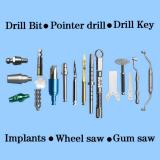 Implant
Corresponding and matching drills and tools of different types, forms, shapes, structures can be high precisely ground to mold according to different brands and different types of implants forms, shap... VIEW MORE
Implant
Corresponding and matching drills and tools of different types, forms, shapes, structures can be high precisely ground to mold according to different brands and different types of implants forms, shap... VIEW MORE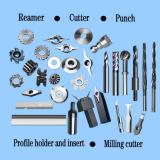 Cutting Tools
Super-hardness machining for special, non-standard new ite ms with different size and tolerance. VIEW MORE
Cutting Tools
Super-hardness machining for special, non-standard new ite ms with different size and tolerance. VIEW MORE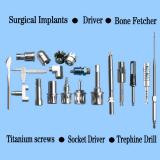 Accessory Parts
we can customize for you according to your samples or drawings for any manufacturing of ceramic,carbide,stainless high-speed steel, stainless steel, titanium alloy, titanium diamond, etc series, hig... VIEW MORE
Accessory Parts
we can customize for you according to your samples or drawings for any manufacturing of ceramic,carbide,stainless high-speed steel, stainless steel, titanium alloy, titanium diamond, etc series, hig... VIEW MORE
















































 +86-021-50327060
+86-021-50327060 
 NO.1269 Plant, Jinhu Road, Jinqiao Export Processing Zone, Pudong New District, Shanghai, China.
NO.1269 Plant, Jinhu Road, Jinqiao Export Processing Zone, Pudong New District, Shanghai, China. 
